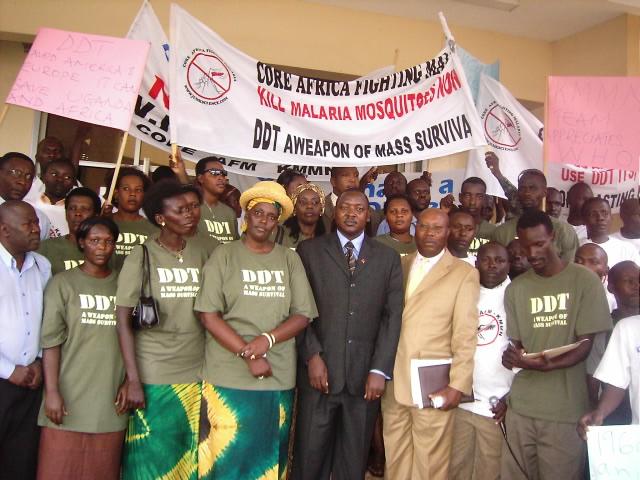WHO wouldn’t want to save this child?
For right now, we’ll just leave that as a question.
The WHO summary document concerning its program to rollback the use of DDT states that,
Malaria is one of the greatest public health challenges facing the developing world. World Health Organization (WHO) data indicate that malaria causes over 1 million deaths per year, with
over 90% of those deaths occurring in sub-Saharan Africa. Malaria causes over 300 million cases of acute illness each year. Children account for over three-quarters of these cases, and malaria kills an African child every 30 seconds. Beyond the immediate disease burden, malaria incurs devastating costs on local economies, both direct costs of treatment and prevention and indirect costs of lost productivity. This burden is especially great in the tropical developing
world where malaria most often occurs.
So it sounds like you’d want an effective tool for combating a disease that kills a child every 30 seconds, right? The WHO document says that,
Spraying indoor surfaces with DDT has been highly effective in interrupting malarial transmission in many developing countries.
So why, then, does the WHO want to phase out DDT? The WHO says,
Because of its chemical stability, it is slowly metabolized, it accumulates in the environment through food chains and in tissues of exposed organisms and is potentially harmful to wildlife and to humans.
So the WHO wants to phase-out the “highly effective” DDT because it is “potentially” harmful. But what does “potentially” harmful mean and does it offset a-dead-child-every-30-seconds?
Next, the WHO says,
DDT and its residues build up in the food chain, and it is potentially harmful to wildlife and to humans, if not applied in accordance with WHO guidelines and recommendations.
So the WHO wants to phase-out DDT because some applicators don’t use it properly? Isn’t it worth ensuring that DDT is used properly (whatever that actually means) given that a child dies every 30 seconds from malaria?
The WHO continues,
Chlorinated hydrocarbon pesticides such as DDT, which became widely used in the 1940s, are slowly metabolized, accumulate in living tissue, and can affect the health of humans and wildlife. There is now considerable debate and increased suspicion regarding the ability of DDT and other pesticides to disrupt the endocrine systems of mammals.
Debate? Are you kidding me? Who is debating what? There seems to be no debate that a child dies every 30 seconds from malaria. How many children need to die while unknown people allegedly debate who-knows-what?
Finally, the WHO says,
New evidence is being published about links between low-level DDT exposure and adverse health effects, in particular related to childhood neurodevelopment, breast cancer in
women, male reproductive health (reduced sperm counts and quality) and to diabetes.
Even if these claims were true — and they’re not (see e.g., sperm count and breast cancer claims debunked) — since when does any of this outweigh the tragedy of a-dead-child-every-30-seconds?
So there’s no more question — the WHO wouldn’t want to save this child.


